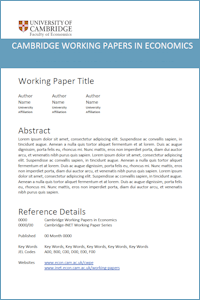
Anaya, K. and Pollitt, M.
Integrating Distributed Generation: Regulation and Trends in Three Leading Countries
CWPE1449
Abstract: We explore trends in the deployment and integration of distributed generation in Germany, Denmark and Sweden. In particular, we examine the regulation of renewable energy generation with a focus on grid access and connection mechanisms. The high rate of distributed generation penetration in these countries is the result of early support given to the expansion of renewable energy generation – mainly wind and solar - within their respective national policies. Germany and Denmark are the countries with the most sophisticated support schemes, which have shown changes over time. In terms of connections, Germany is the country with the most favourable connection regime. It provides not only priority connection but also priority use of the grid to generation units that produce electricity from renewable energy sources. Sweden guarantees equal treatment among different technologies (i.e. a non-discrimination principle) and is thus the least favourable. High connection costs have been observed, especially in Germany and Denmark. The costs of network upgrades are usually socialised across customers. The use of smart solutions combined with novel business models might allow more efficient use of the current distribution electricity infrastructure. Hence, integration issues should be taken into consideration in order to avoid expansion of distributed generation in a way that unnecessarily raises total system costs, via high connection costs.
Keywords: distributed generation, renewable energy, support schemes, connection arrangements
JEL Codes: H25 L94 L98 Q48
PDF: https://www.econ.cam.ac.uk/research-files/repec/cam/pdf/cwpe1449.pdf 
EPRG Paper Link: 1423
Open Access Link: https://doi.org/10.17863/CAM.5676
